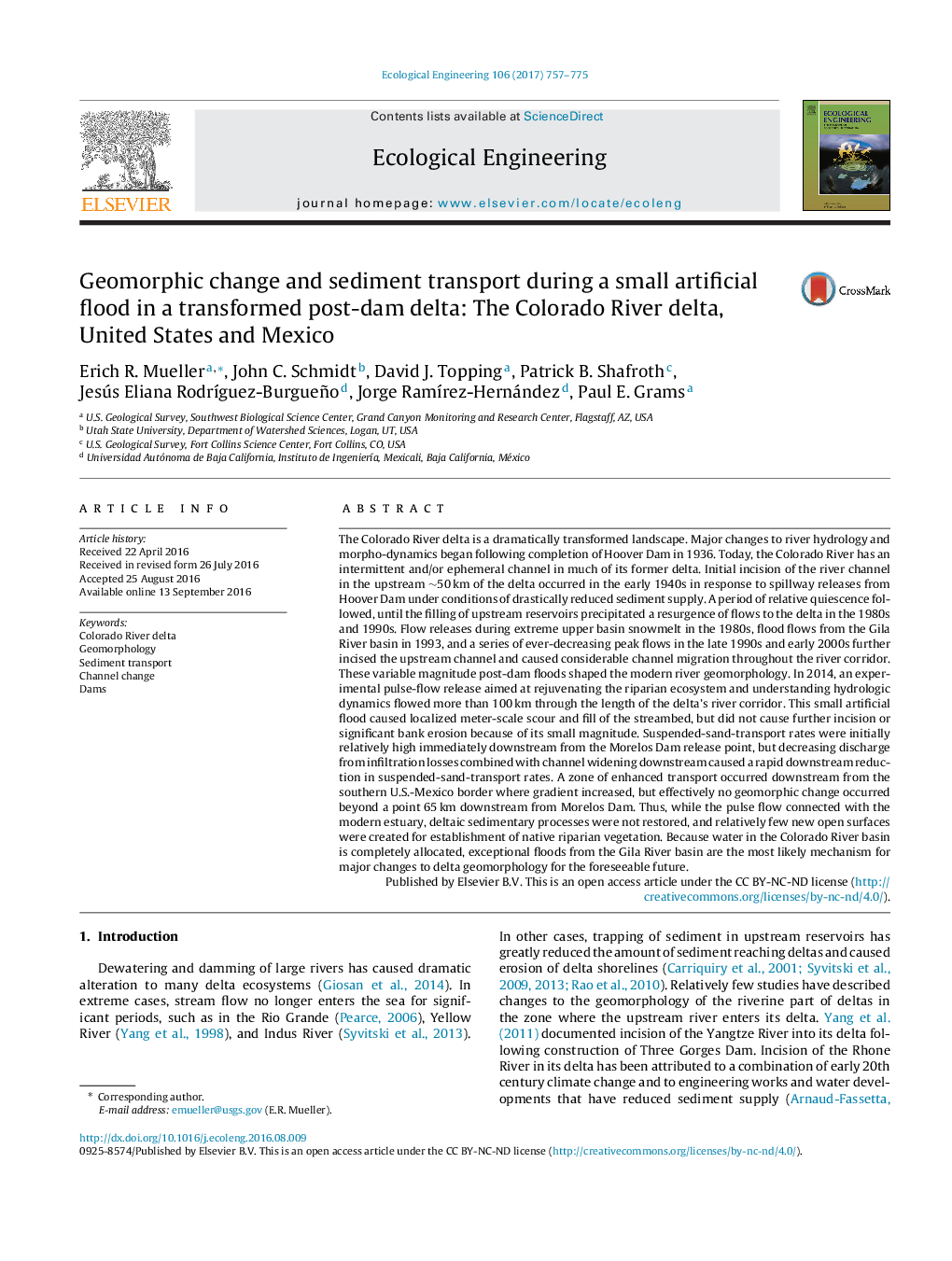| کد مقاله | کد نشریه | سال انتشار | مقاله انگلیسی | نسخه تمام متن |
|---|---|---|---|---|
| 5743696 | 1412319 | 2017 | 19 صفحه PDF | دانلود رایگان |
- The Colorado River is intermittent or ephemeral in much of its former delta.
- Post-dam delta channel change is dominated by variable-magnitude floods.
- Channel incision of several meters has occurred in much of the former delta.
- The pulse flow caused localized meter-scale scour and fill in the post-dam incised channel.
- Suspended-sediment transport measurements suggest minimal downstream sand export.
The Colorado River delta is a dramatically transformed landscape. Major changes to river hydrology and morpho-dynamics began following completion of Hoover Dam in 1936. Today, the Colorado River has an intermittent and/or ephemeral channel in much of its former delta. Initial incision of the river channel in the upstream â¼50Â km of the delta occurred in the early 1940s in response to spillway releases from Hoover Dam under conditions of drastically reduced sediment supply. A period of relative quiescence followed, until the filling of upstream reservoirs precipitated a resurgence of flows to the delta in the 1980s and 1990s. Flow releases during extreme upper basin snowmelt in the 1980s, flood flows from the Gila River basin in 1993, and a series of ever-decreasing peak flows in the late 1990s and early 2000s further incised the upstream channel and caused considerable channel migration throughout the river corridor. These variable magnitude post-dam floods shaped the modern river geomorphology. In 2014, an experimental pulse-flow release aimed at rejuvenating the riparian ecosystem and understanding hydrologic dynamics flowed more than 100Â km through the length of the delta's river corridor. This small artificial flood caused localized meter-scale scour and fill of the streambed, but did not cause further incision or significant bank erosion because of its small magnitude. Suspended-sand-transport rates were initially relatively high immediately downstream from the Morelos Dam release point, but decreasing discharge from infiltration losses combined with channel widening downstream caused a rapid downstream reduction in suspended-sand-transport rates. A zone of enhanced transport occurred downstream from the southern U.S.-Mexico border where gradient increased, but effectively no geomorphic change occurred beyond a point 65Â km downstream from Morelos Dam. Thus, while the pulse flow connected with the modern estuary, deltaic sedimentary processes were not restored, and relatively few new open surfaces were created for establishment of native riparian vegetation. Because water in the Colorado River basin is completely allocated, exceptional floods from the Gila River basin are the most likely mechanism for major changes to delta geomorphology for the foreseeable future.
Journal: Ecological Engineering - Volume 106, Part B, September 2017, Pages 757-775
